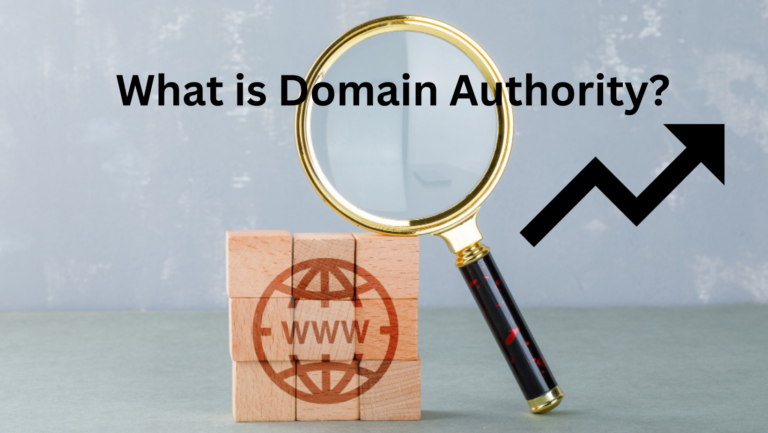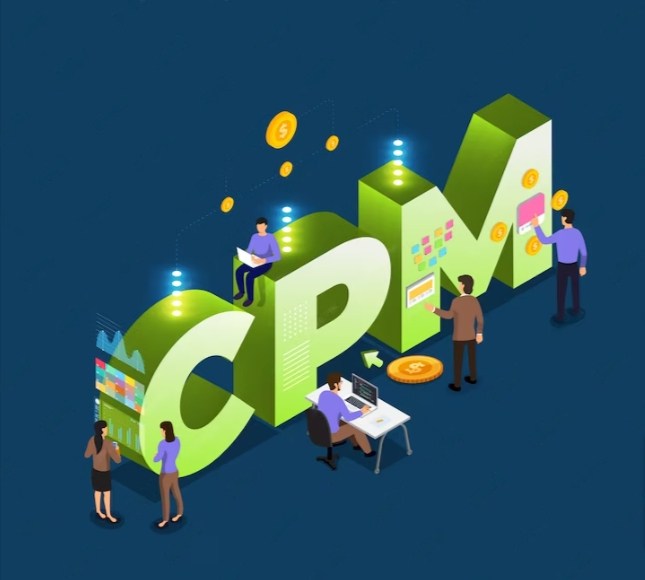SEO For Ecommerce Product Pages: 10 Do’s & Don’ts
In the ever-evolving landscape of e-commerce, where every click holds the potential for a conversion, the role of search engine optimization (SEO) in enhancing the visibility and discoverability of your product pages cannot be understated. Welcome to a comprehensive guide on “SEO For Ecommerce Product Pages: 10 Do’s & Don’ts,” where we dive deeper into the intricacies of optimizing your product pages for maximum impact.
Introduction: The Power of Ecommerce SEO
E-commerce SEO is not merely about ranking higher in search engine results; it’s about crafting an online shopping experience that seamlessly merges user intent with strategic optimization. By aligning your product pages with user needs and search engine algorithms, you can create a synergy that propels your online store to the forefront of digital marketplaces.
The Foundation: Ecommerce SEO Essentials
Before delving into the specifics of do’s and don’ts, let’s establish a solid foundation in understanding the critical aspects of e-commerce SEO. From the significance of keyword research tailored to your product niche to comprehending the intricacies of on-page optimization, this section sets the stage for a comprehensive SEO strategy.
Optimizing Product Descriptions and Content
Creating an effective product description involves several key elements to maximize its impact, both for users and search engines:
1. Relevance and Clarity: Start with a clear and concise description that outlines the product’s features, benefits, and unique selling points. Ensure it directly addresses what the potential buyer is seeking.
2. Keyword Integration: Incorporate relevant keywords naturally within the description. These keywords should align with what your audience is searching for. Don’t stuff them unnaturally; instead, weave them seamlessly into the narrative. Try to use keywords with high volume and find keywords with low competition
3. Unique and Compelling Content: Make your description stand out. Offer something beyond basic specifications. Engage the reader with storytelling, descriptive language, and a tone that reflects your brand’s personality.
4. User-Centric Approach: Understand your audience’s pain points and desires. Address how your product solves a problem or fulfills a need. Use language that resonates with them, focusing on benefits rather than just features.
5. Formatting and Readability: Break down the content into digestible chunks. Use bullet points, subheadings, and whitespace to enhance readability. People often skim, so make key points easily understandable.
6. Visuals and Multimedia: Supplement your description with high-quality images, videos, or infographics. Visuals complement the text, providing a better understanding and visual appeal to potential buyers.
Regarding SEO, the natural inclusion of keywords is crucial. Google’s algorithms have become adept at understanding context and relevancy. Avoid stuffing keywords unnaturally; instead, organically integrate them within the description. For instance, if you sell handmade leather bags, use phrases like “premium leather handbags” or “artisanal leather purses” in a way that reads smoothly.
Lastly, the importance of unique and engaging content cannot be overstated. Creating content that not only informs but also entertains or emotionally connects with your audience ensures they stay engaged. This engagement often translates into longer page visits and higher rankings on search engines.
Remember, while optimizing for search engines is important, creating content that genuinely serves and resonates with your audience should always be the primary focus. When your product descriptions strike the balance between SEO optimization and user-centric content, you create a winning formula that benefits both your customers and your search rankings.
What are the benefits of Product Images and Videos?
High-quality images and videos play a pivotal role in enhancing SEO for product pages:
SEO Benefits of High-Quality Images and Videos:
1. Improved User Experience: High-quality visuals provide a visual representation of your product, allowing users to assess its appearance, features, and functionality. When users find relevant and engaging visuals, they tend to stay on the page longer, signaling to search engines that your content is valuable and aligned with user intent. This increased dwell time and decreased bounce rate contribute positively to SEO. UI/UX Can also Increase Conversion Rates.
2. Enhanced Click-Through Rates: In search engine results, visually appealing thumbnails or preview images stand out, attracting attention and enticing users to click through to your site. This higher click-through rate (CTR) indicates to search engines that your content is relevant and worthy of being displayed prominently, potentially improving your ranking.
3. Reduced Bounce Rates: When users quickly find what they’re looking for through high-quality images or videos, they’re more likely to engage further with your content, decreasing bounce rates. Lower bounce rates signal to search engines that your page satisfies user queries effectively, potentially boosting your ranking.
Optimizing Image Elements for Search Visibility:
1. Alt Text: Alt text, or alternative text, provides a text description of an image. It’s crucial for accessibility and SEO. Describe the image using relevant keywords in a concise and descriptive manner. This text helps search engines understand the image’s content and context, contributing to improved visibility in image searches.
2. File Names: Before uploading images, rename the files using descriptive, keyword-rich names that accurately represent the image content. This practice aids search engines in identifying and indexing the images correctly. For instance, “red-leather-handbag.jpg” is more informative than a generic filename like “IMG_12345.jpg.”
3. Captions and Descriptions: Adding captions or descriptions to images reinforces their relevance to your content. Incorporate natural language and relevant keywords within these captions to provide context to both users and search engines.
Using Videos for Enhanced User Experience and SEO:
1. Product Demonstrations: Videos showcasing how a product works, its unique features, or practical demonstrations help users understand the product better. Detailed video content keeps users engaged longer, signaling quality to search engines.
2. Optimization of Video Elements: Optimize video titles, descriptions, and tags with relevant keywords related to the video’s content. This helps search engines understand the video’s context and improves its chances of appearing in relevant searches.
3. Transcriptions and Closed Captions: Providing transcriptions or closed captions for videos not only assists users who prefer or require them but also aids search engines in indexing and understanding the video content. This can enhance SEO by making the content more accessible and searchable.
4. Interactive Elements: Incorporate interactive elements within videos, such as clickable links, embedded calls-to-action, or end screens. These encourage user engagement, prolonging their stay on your site, and potentially driving traffic to other relevant pages.
By implementing these strategies, you not only optimize your visuals for better SEO but also provide a richer and more engaging experience for users, aligning both their needs and search engine preferences.
Why should you use Long-Tail Keywords for Product Pages?
While broader keywords are crucial, long-tail keywords hold the key to capturing users at various stages of the buying journey. Learn how to identify and integrate long-tail keywords that align with user intent, transforming your product pages into relevant solutions for potential customers.
Understanding User Intent: Mapping the Customer Journey
E-commerce SEO transcends keyword optimization; it revolves around understanding user intent. By delving into the minds of your target audience, you can craft product pages that not only provide the products they seek but also address their pain points and aspirations.
SEO For Ecommerce Product Pages: 10 Do’s & Don’ts
In the bustling realm of e-commerce, where every click holds the potential for a sale, mastering the art of optimizing product pages for search engines is akin to wielding a magic wand. Welcome to the comprehensive guide to “SEO For Ecommerce Product Pages: 10 Do’s & Don’ts,” where we unravel the intricacies of propelling your online store to the forefront of search engine results.
Do’s
- Strategic Keyword Research and Implementation:
The foundation of successful e-commerce SEO rests on thorough keyword research. Identify high-intent keywords, including long-tail variations, relevant to your products. Incorporate them seamlessly into product titles, descriptions, and meta tags to enhance search engine visibility.
- Unique and Compelling Product Descriptions:
Craft product descriptions that are not only informative but also evoke a sense of connection with the audience. Unique content that addresses the product’s benefits, features, and applications not only engages potential customers but also establishes authenticity in the eyes of search engines.
- High-Quality Images and Videos:
Visual content reigns supreme in e-commerce. Utilize high-resolution images and even videos to showcase your products from various angles. Optimize images with descriptive filenames and alt tags to enhance accessibility and indexability.
- Mobile-First Design and Responsiveness:
In an era dominated by mobile browsing, a responsive design is non-negotiable. Ensure your product pages are optimized for mobile devices, offering a seamless user experience regardless of screen size.
- Internal Linking Structure:
Craft a coherent internal linking structure that guides users through related products, categories, and relevant content. Strategic internal linking not only enhances user navigation but also distributes link equity, boosting overall SEO performance.
- User Reviews and Ratings:
Encourage user-generated content in the form of reviews and ratings. Authentic feedback not only fosters trust but also adds fresh, keyword-rich content to your product pages, positively impacting SEO.
- Rich Snippets and Structured Data Markup:
Employ schema markup to provide search engines with structured data about your products. This enhances the visibility of rich snippets, including product prices, ratings, and availability, making your listings stand out in search results.
- Page Speed Optimization:
Page load speed significantly impacts user experience and search engine rankings. Compress images, minify code, and leverage browser caching to ensure swift load times for your product pages.
- Social Sharing Integration:
Integrate social sharing buttons to facilitate the amplification of your products across social media platforms. Social signals indirectly impact SEO by driving traffic and engagement.
- Regular Monitoring and Optimization:
Engage in continuous monitoring of your product pages’ performance using analytics tools. Analyze user behavior, click-through rates, and conversion rates to identify areas for improvement and implement timely optimizations.
Don’ts
- Duplicate Content:
Avoid using duplicate product descriptions provided by manufacturers. Craft unique content to prevent duplicate content issues, which can negatively impact your SEO efforts.
- Ignoring Page Load Speed:
A slow-loading page can lead to high bounce rates and frustrated users. Prioritize page speed optimization to provide a seamless browsing experience.
- Neglecting Mobile Optimization:
With mobile devices accounting for a significant portion of web traffic, neglecting mobile optimization can result in missed opportunities. Ensure your product pages are mobile-friendly and provide an excellent user experience across devices.
- Keyword Stuffing:
While incorporating keywords is crucial, avoid keyword stuffing. Maintain a natural flow of content that resonates with users while also appealing to search engines.
- Poor URL Structure:
Craft descriptive and user-friendly URLs for your product pages. Avoid lengthy, convoluted URLs that can confuse both users and search engines.
- Neglecting Meta Data:
Meta titles and descriptions play a pivotal role in click-through rates. Neglecting to optimize these elements can hinder your product pages’ visibility and impact user engagement.
- Overlooking Canonical Tags:
For products with variations or similar versions, implement canonical tags to indicate the primary version. This prevents search engines from indexing duplicate content and diluting your SEO efforts.
- Ignoring Backlinking Opportunities:
While product pages might not naturally attract as many backlinks as blog posts, don’t dismiss the potential for backlinking. Engage in outreach and collaboration to secure valuable backlinks to your product pages.
- Inadequate Category Structure:
A disorganized category structure can confuse both users and search engines. Create a logical and intuitive hierarchy that enhances navigation and helps search engines understand your site’s architecture.
- Skipping Regular SEO Audits:
E-commerce SEO is an ongoing process. Skipping regular SEO audits can lead to missed opportunities and potential issues. Conduct routine audits to identify areas for improvement and ensure your product pages are always optimized.
In conclusion, mastering SEO for e-commerce product pages requires a delicate balance between strategic optimization and user-centric experience. By adhering to these 10 do’s and avoiding the associated don’ts, you’re well on your way to creating product pages that not only resonate with your audience but also dominate search engine rankings
FAQs
- Q: Why is SEO important for ecommerce product pages?
A: SEO plays a crucial role in making your product pages visible to potential customers. Optimized pages are more likely to rank higher in search engine results, increasing your chances of attracting organic traffic and conversions.
- Q: What are some essential do’s for optimizing ecommerce product pages?
A: Some key do’s include thorough keyword research, writing high-quality product descriptions, using descriptive URLs, optimizing images, and creating unique meta titles and descriptions.
- Q: How do I avoid duplicate content on ecommerce product pages?
A: To avoid duplicate content issues, ensure that each product page has unique content, titles, and descriptions. Implement canonical tags to indicate the preferred version of the page if there are variations.
- Q: Should I include customer reviews on product pages for SEO?
A: Yes, customer reviews can enhance SEO by providing fresh, user-generated content. Positive reviews also build trust and may influence buying decisions, contributing to improved rankings and conversions.
- Q: What are some common SEO mistakes to avoid on ecommerce product pages?
A: Avoid using manufacturer descriptions, neglecting image optimization, ignoring mobile responsiveness, overlooking site speed, and failing to create clear calls-to-action. These mistakes can hinder both user experience and search engine rankings.
Remember that SEO for ecommerce product pages requires a combination of technical expertise, user-centric design, and ongoing optimization efforts. Staying informed about best practices and implementing them diligently can lead to improved visibility, higher rankings, and increased online sales.






